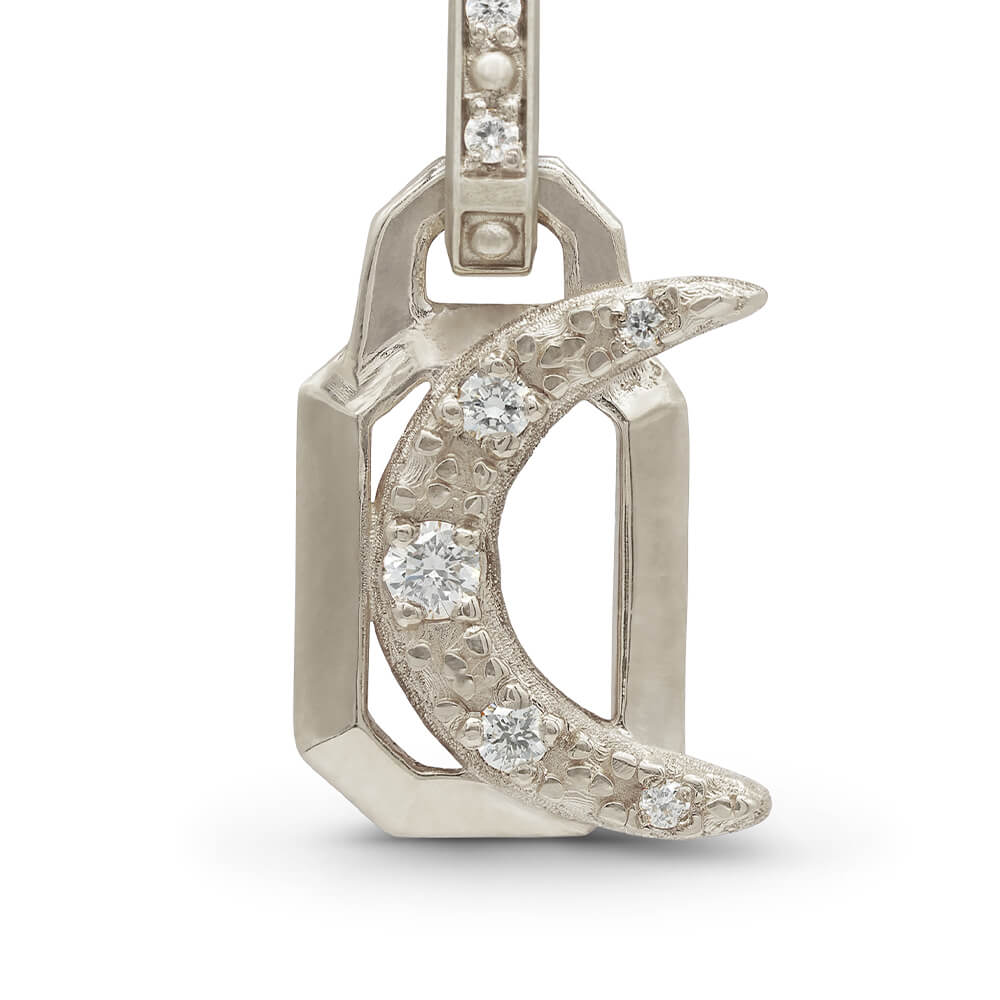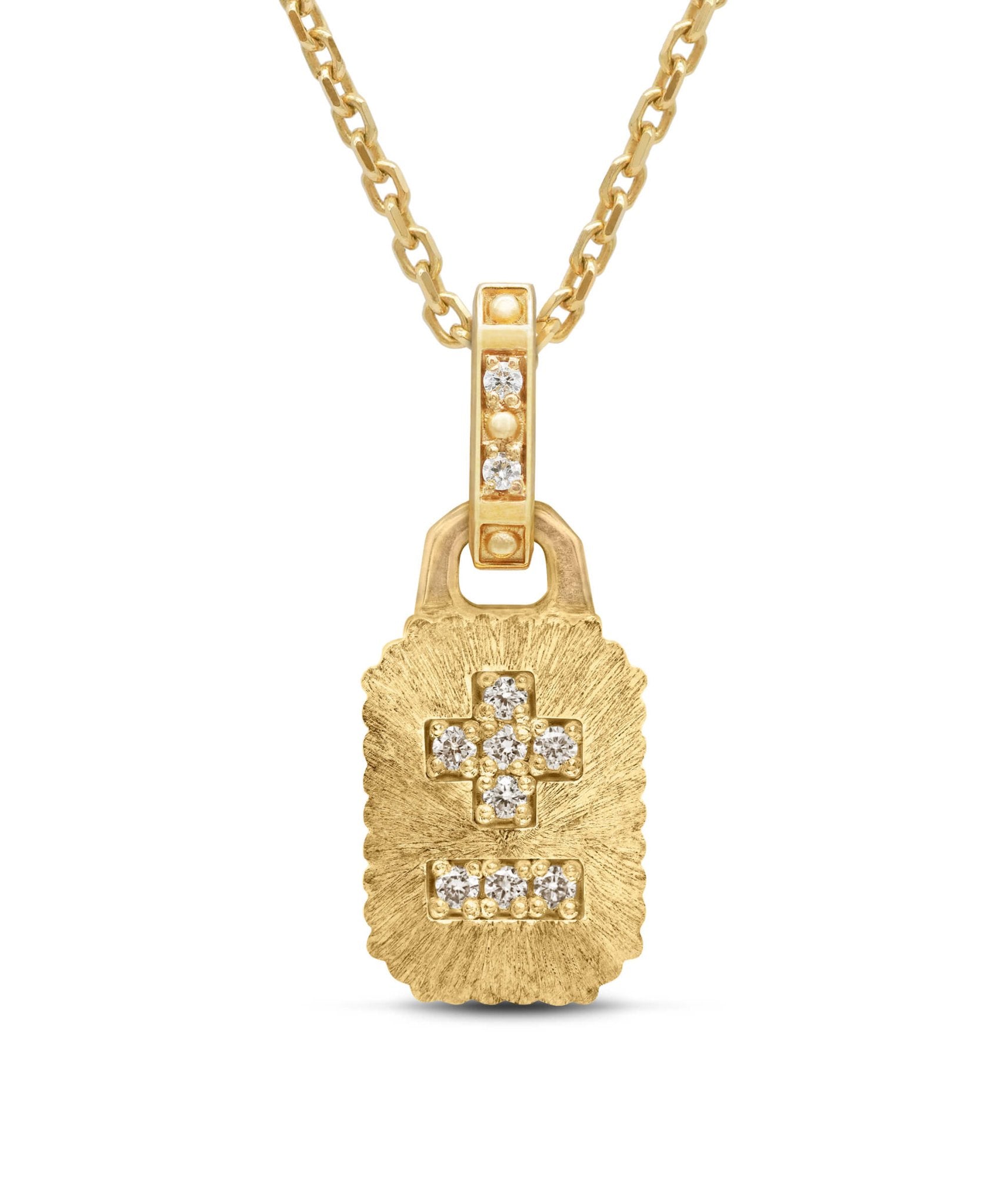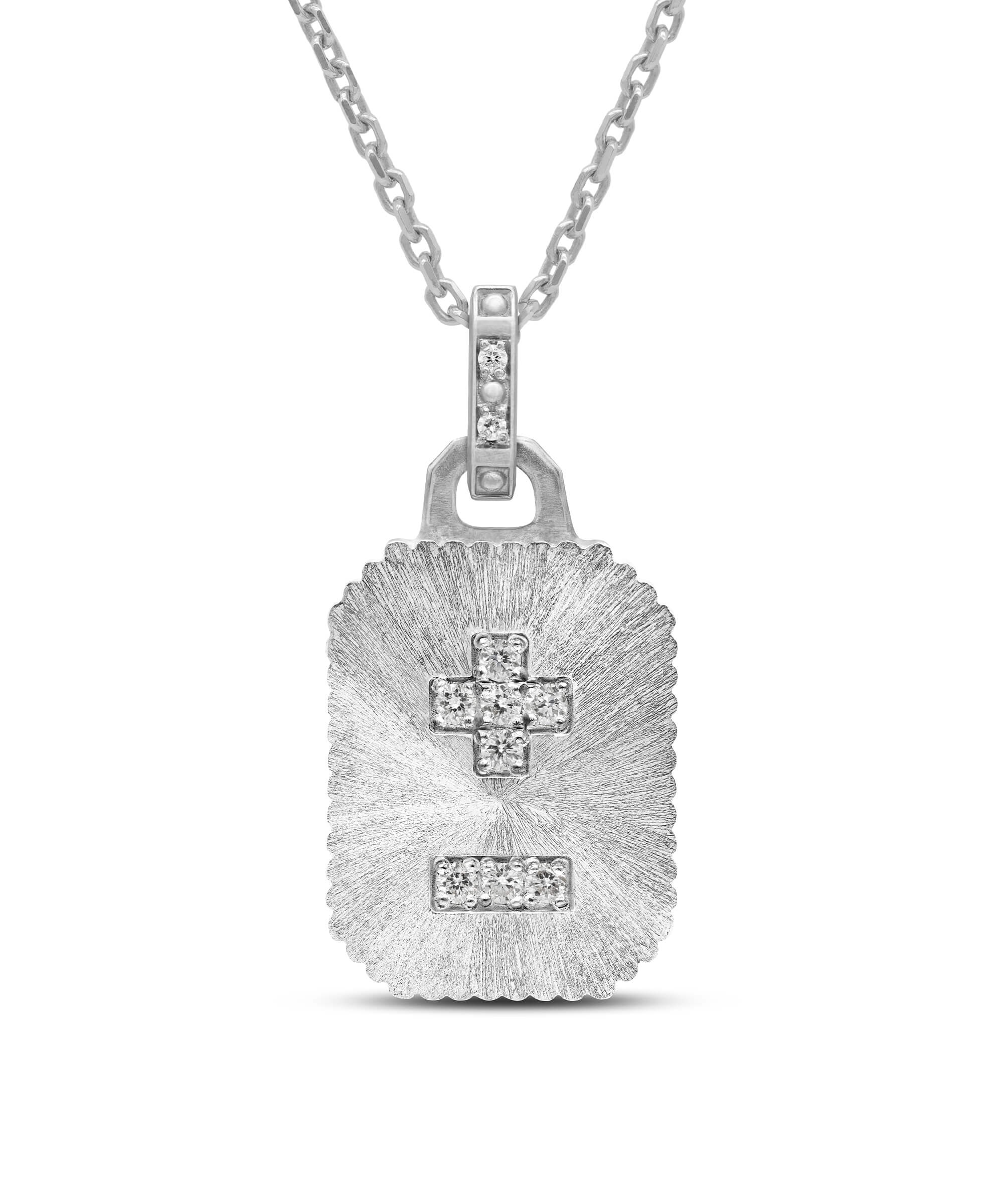The AMULETHA™ Book of Symbols reveals the rose as a timeless emblem of love, beauty, and resilience. This exploration delves into the profound meanings and cultural significance that the rose has held through the ages. From ancient mythology to modern jewelry, it traces the rose's journey, showcasing its enduring elegance and symbolic depth. Each chapter unfolds a new layer, inviting a deeper appreciation of this iconic flower and its place in the tapestry of human expression.
Amuletha™ Book of Symbols
Rose Symbol
*Meditative Rose, 1958 by Salvador Dali
Captivating exploration of surrealism, embodying the artist's fascination with the subconscious mind. The painting features a solitary rose in bloom against a barren landscape, inviting viewers to ponder the juxtaposition of beauty and desolation. This enigmatic composition invites introspection and contemplation of life's inherent paradoxes.
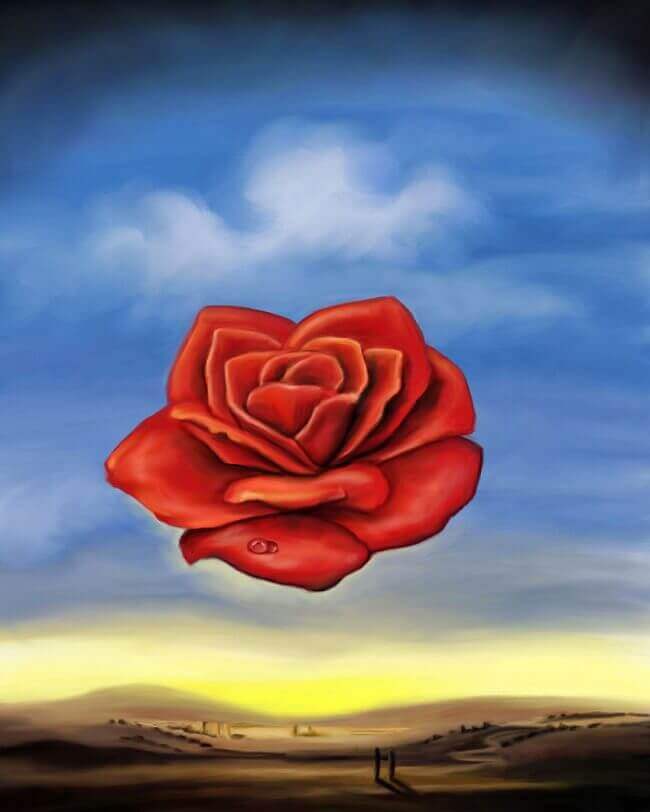
*Meditative Rose, 1958 by Salvador Dali
Captivating exploration of surrealism, embodying the artist's fascination with the subconscious mind. The painting features a solitary rose in bloom against a barren landscape, inviting viewers to ponder the juxtaposition of beauty and desolation. This enigmatic composition invites introspection and contemplation of life's inherent paradoxes.
ROSE SYMBOL ORIGIN
The rose, a symbol with ancient origins, has enchanted humanity for millennia. Its cultivation can be traced back to around 5000 years ago in China, where it was esteemed for its beauty and medicinal properties. From China, the rose's allure spread to Persia, where it became a profound symbol of beauty and love, often associated with divine romance and paradise gardens in Persian literature and art.
The Greeks and Romans further propagated the rose’s symbolism. In ancient Greece, the rose was linked to Aphrodite, the goddess of love and beauty, symbolizing passion and desire. The Romans adopted and expanded these associations, using roses in their lavish banquets, public festivals, and even in burial practices, where roses adorned graves to signify resurrection and eternal life. The rose thus evolved into a multifaceted symbol, representing love, beauty, and the transient nature of life.
During the Middle Ages, the rose’s symbolism deepened in Christian contexts. It became associated with the Virgin Mary, earning the title "rosa mystica" or mystical rose, symbolizing purity and divine love. In this era, the rose was also a prominent feature in heraldry and literature, often depicted in the coat of arms and romantic poetry. The rose's journey from ancient China to medieval Europe showcases its enduring beauty and the universal themes of love and reverence it symbolizes across cultures.
What does rose symbolize
While the rose symbol carries numerous nuanced meanings, these four are the most universally recognized and embraced.
Love
Universally recognized as a symbol of romantic affection and enduring passion.
Friendship
Symbolize appreciation and joy among friends.
Beauty
Embodies aesthetic perfection and the fleeting nature of physical beauty.
Honor
Often used in ceremonies expressing respect and recognition for achievements or sacrifices.
Cultural mention
Throughout history, the rose has captivated human cultures, transcending its role as a simple flower to become a profound symbol of beauty, love, and friendship. In ancient mythology, it was linked to divine figures and transformative legends. The opulent celebrations of Rome, the sacred visions in Mexico, and the ecclesiastical traditions in Europe all embedded the rose with rich, layered meanings. This exploration delves into how the rose has woven itself into the tapestry of human expression, embodying our deepest values and aspirations across different eras and societies.
Rose symbol in Greek mythology
In ancient Greek culture, the rose was deeply revered and intricately linked to mythology. According to legend, the rose was created by Chloris, the goddess of flowers, who transformed a lifeless nymph into a flower. To complete its transformation, Aphrodite, the goddess of love, added beauty to the rose, while Dionysus, the god of wine, bestowed it with its enchanting fragrance. The gods Zephyrus and Apollo contributed as well, giving the rose its gentle breeze and radiance, respectively. This divine creation adorned banquet tables, bridal garlands, and funerary rites, seamlessly integrating into the fabric of Greek rituals and celebrations. The rose's presence in these ceremonies was a testament to its enduring allure and significance,
*Primavera by Botticelli
In Botticelli's Primavera (1478), Chloris, the goddess of flowers, is vividly depicted transforming into Flora as she is embraced by Zephyrus, symbolizing the genesis of spring and the ethereal birth of the rose from ancient Greek mythology.
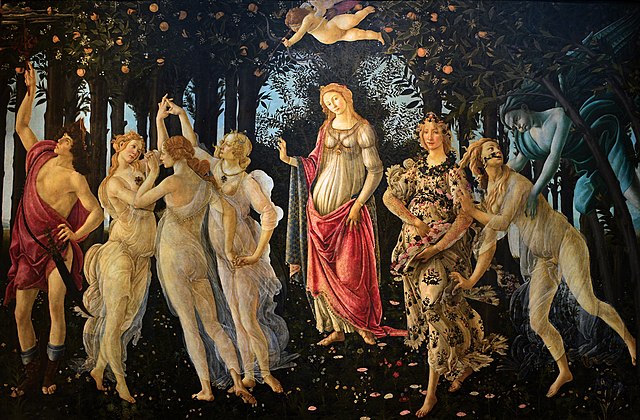
*Primavera by Botticelli
In Botticelli's Primavera (1478), Chloris, the goddess of flowers, is vividly depicted transforming into Flora as she is embraced by Zephyrus, symbolizing the genesis of spring and the ethereal birth of the rose from ancient Greek mythology.
Roses and the Romans symbol
In ancient Roman culture, the rose transcended its role as a mere flower, becoming an integral part of both public and private life. Beyond its mythological ties to Venus, the goddess of love, the rose was deeply embedded in Roman customs and celebrations. During their lavish banquets, known as Convivia, Romans would drape garlands of roses over their guests and scatter petals across dining couches, creating an aura of luxury and opulence. The term “sub rosa,” meaning “under the rose,” originated from the Roman practice of hanging a rose from the ceiling during confidential meetings, signifying that conversations held beneath it were to remain secret. During gladiatorial games, roses were often strewn on the arena floor, celebrating the victorious and masking the scent of bloodshed. In their funeral rituals, roses adorned graves and urns, symbolizing honor and the passage to the afterlife. Thus, in the vibrant and multifaceted world of ancient Rome, the rose was woven deeply into the fabric of both celebration and solemnity.
*"The Roses of Heliogabalus" Painted in 1888 by Sir Lawrence Alma-Tadema
Painting depicts a lavish banquet by the young Roman emperor Elagabalus, renowned for his extravagance. Guests are submerged under a deluge of pink rose petals, symbolizing the impermanence and decadence of Elagabalus's reign. Positioned regally in a golden silk robe and tiara, the emperor watches from a platform, surrounded by garlanded nobles. A maenad-clad woman plays the double pipes beside a marble pillar, with a bronze Dionysus statue set against distant hills. This painting vividly encapsulates a moment of extravagant pleasure, symbolizing both the opulence and the transient nature of imperial Rome through the ephemeral beauty of roses.
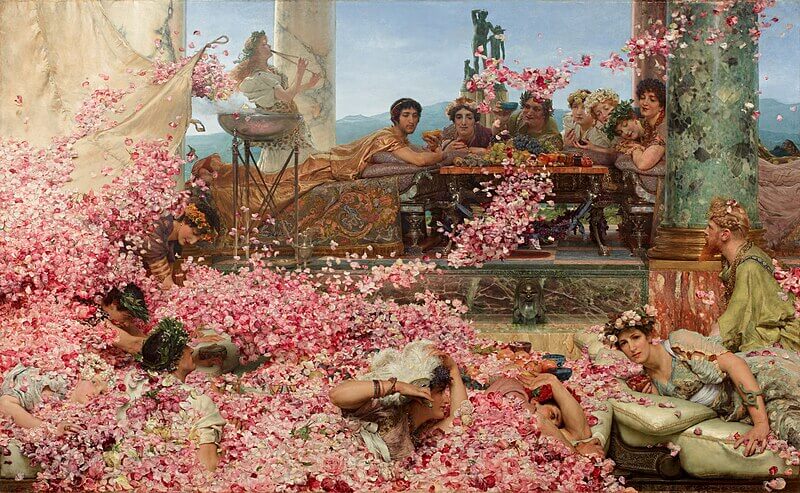
*"The Roses of Heliogabalus" Painted in 1888 by Sir Lawrence Alma-Tadema
Painting depicts a lavish banquet by the young Roman emperor Elagabalus, renowned for his extravagance. Guests are submerged under a deluge of pink rose petals, symbolizing the impermanence and decadence of Elagabalus's reign. Positioned regally in a golden silk robe and tiara, the emperor watches from a platform, surrounded by garlanded nobles. A maenad-clad woman plays the double pipes beside a marble pillar, with a bronze Dionysus statue set against distant hills. This painting vividly encapsulates a moment of extravagant pleasure, symbolizing both the opulence and the transient nature of imperial Rome through the ephemeral beauty of roses.
The Symbolism and Splendor of Rose Windows
The rose window, an iconic element of Gothic architecture, symbolizes the divine and the infinite through its intricate design and radiant beauty. Originating in 12th-century Europe, these circular stained glass windows often adorn cathedrals, representing the wheel of fortune and the passage of time. Their elaborate patterns and vibrant colors depict biblical scenes and saints, serving both as spiritual storytelling and a testament to medieval craftsmanship. Notably, the rose windows of Notre-Dame de Paris and Chartres Cathedral are celebrated for their artistic and historical significance. Today, these windows continue to inspire awe, embodying a harmonious blend of art, faith, and history.
Rose windows in Notre-Dame Cathedral
The rose windows of Notre-Dame Cathedral, renowned for their stunning beauty and intricate design, are masterpieces of Gothic architecture. Created in the 13th century, these windows depict biblical scenes and saints.
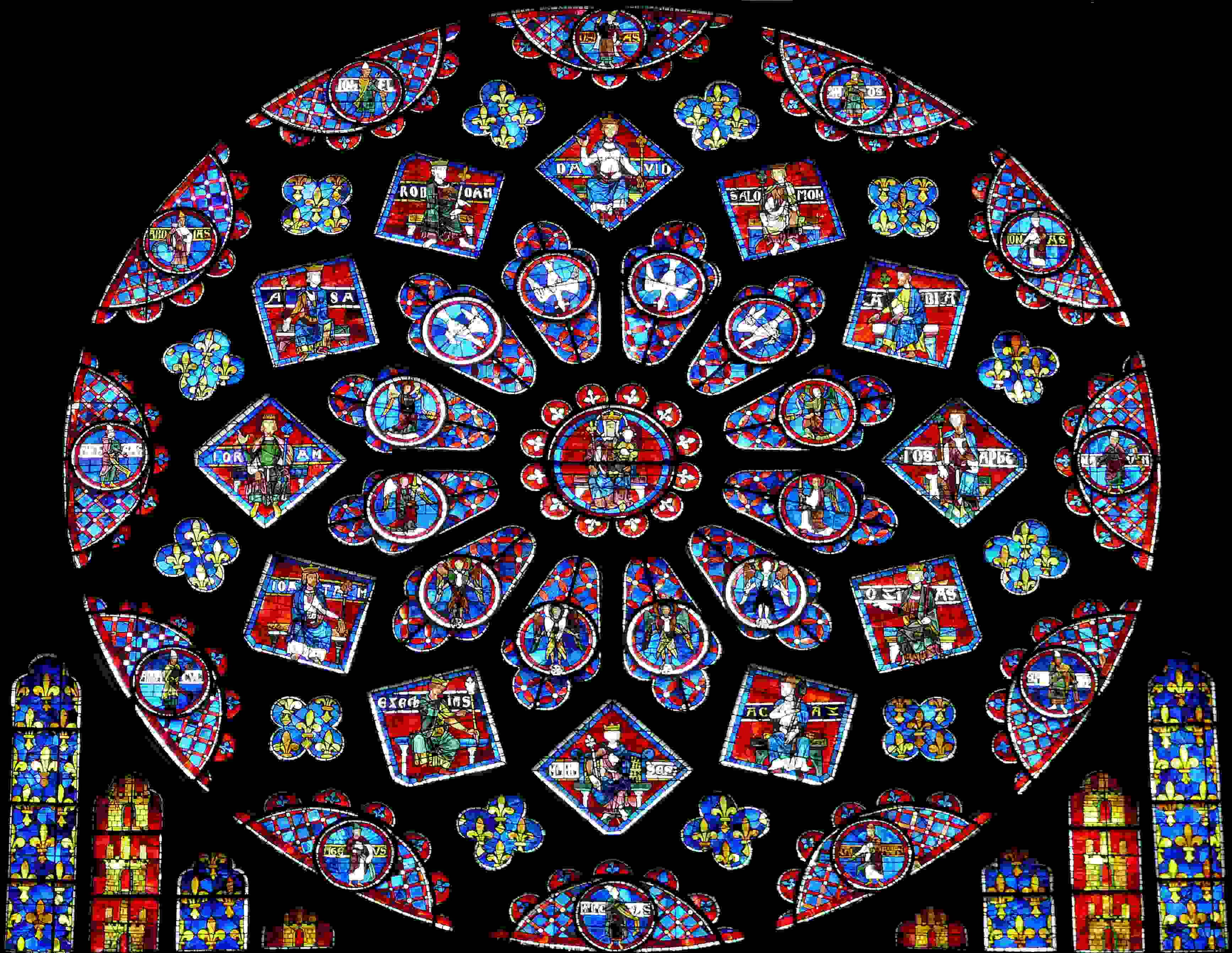
Rose windows in Notre-Dame Cathedral
The rose windows of Notre-Dame Cathedral, renowned for their stunning beauty and intricate design, are masterpieces of Gothic architecture. Created in the 13th century, these windows depict biblical scenes and saints.
The Enchanted Rose
The enchanted rose, a symbol of mystical allure and profound mystery, captivates with its timeless elegance. Rooted in folklore, it epitomizes the transformative power of love and the fleeting nature of beauty. Most famously, the enchanted rose appears in "Beauty and the Beast," where it signifies a curse that can only be broken by true love before the last petal falls, symbolizing redemption and the power of inner beauty over outward appearance. Today, the enchanted rose continues to evoke a sense of wonder, representing both the magic of fairy tales and the enduring power of love.
The Enchanted Rose from Disney's 1991 animated film “Beauty and the Beast”.
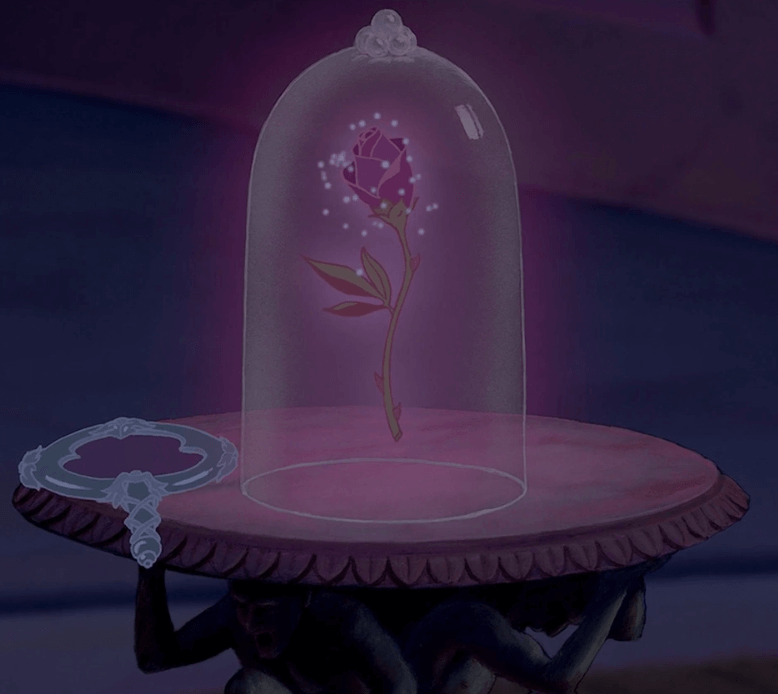
The Enchanted Rose from Disney's 1991 animated film “Beauty and the Beast”.
Rose symbol in the world of jewelry
In the world of fine jewelry, the rose symbol epitomizes timeless grace and profound sentiment. Typically adored by romantics, spiritual seekers, and connoisseurs of classic beauty, it appeals across a broad spectrum of age groups. Young adults are drawn to the rose for its representation of blossoming love and new beginnings, while older generations cherish the rose for its connection to lifelong memories and spiritual depth. The rose conveys love, personal development, and spiritual protection, often cherished for its deep emotional resonance and spiritual symbolism, representing purity and divine affection.Gifting rose jewelry transcends mere adornment, becoming a profound gesture of love and admiration. Such a gift speaks volumes, perfect for commemorating significant moments. Consider a parent bestowing a rose pendant on their child as a symbol of enduring love, friends exchanging rose tokens to honor their unbreakable bond, or a lover presenting a rose pendant during a proposal, each act infused with deep sentimental value.
What does a rose symbolize in literature?
The rose, a symbol of love and beauty, has captivated literature for centuries, most profoundly in romantic poetry and gothic literature. Its delicate allure and deep symbolism add layers of meaning to texts, representing the complexities of human emotion and the ephemeral nature of life. As a metaphor for love and passion, the rose graces the pages of timeless works, enriching narratives with its profound symbolism. In Shakespeare’s 16th-century works, the rose appears over 70 times, famously in "Romeo and Juliet," symbolizing enduring love. Renowned poets like Robert Burns, William Butler Yeats, and Robert Frost have also celebrated the rose, each imbuing it with unique layers of meaning and emotional depth, continuing to enchant and inspire through their literary masterpieces.
Shakespeare`s favorite flower
The word ‘rose’ graces Shakespeare’s 16th-century plays and sonnets over 70 times, emerging as his most cherished flower. In the timeless romance of Romeo and Juliet, Juliet, from the House of Capulet, passionately defends her love for Romeo, despite their feuding families. She muses on the rose, suggesting that its beauty and essence remain unchanged, no matter what it is called. This reflection on the rose transcends the barriers of names and family feuds, capturing the pure, unchanging nature of true love and its enduring allure.
“What’s in a name? That which we call a rose, by any other name would smell as sweet”.
Romeo + Juliet, 1996 movie by Baz Luhrmann
A pair of 'star-crossed lovers' from rival families in a violence-riven city must hide their blossoming romance. Baz Luhrmann's explosive update of Shakespeare's tragedy.
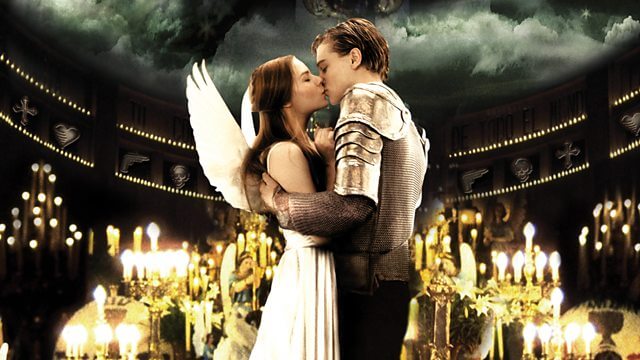
"A Red, Red Rose" by Robert Burns
O my Luve is like a red, red rose
That`s newly sprung in June;
O my Luve is like the melody
That`s sweetly played in tune
This poem is a heartfelt declaration of the poet's deep and enduring love, using the red rose as a symbol of fresh and passionate affection.
"To the Rose upon the Rood of Time" by William Butler Yeats
Red Rose, proud Rose,
sad Rose of all my days!
Come near me, while
I sing the ancient ways:
Yeats uses the rose as a symbol of Ireland itself, reflecting beauty, cultural heritage, and historical depth in his plea for the rose to turn towards him.
"The Rose Family" by Robert Frost
The rose is a rose,
And was always a rose,
But the theory new goes
That the apple`s a rose.
This poem explores the concept of belonging and identity, with the rose depicted as the essential archetype of flowers, celebrated for its universal appeal and beauty.
Thoughts
Thoughts placed alongside a symbol resonate with its meaning, serving as a guide to expand your understanding of the symbol's significance in relation to your personal experiences. AMULETHA™ also embraces this approach, invites a deeper contemplation of how symbolic meanings can reflect and enrich your life’s narrative, enhancing your appreciation of both the symbol and its broader implications.
Life's Melodic Harmony - love resounds as a harmonious melody of romantic affection and enduring ardor in life's grand symphony.
Companionship's Radiant Light - appreciation and joy among companions radiate kindness and togetherness, lighting up life's path.
Momentary Allure - in its transient beauty, a delicate charm adds a touch of perfection and allure to life's essence.
Respectful Recognition - Honoring achievements and sacrifices with reverence and esteem.
FREQUENTLY ASKED QUESTIONS
IS IT APPROPRIATE TO GIVE ROSES TO A FRIEND?
Absolutely, presenting roses to a friend is a delightful gesture of affection and thoughtfulness. Whether as a spontaneous surprise or a "just because" gift, a vibrant bouquet of roses can illuminate a friend’s day, conveying warmth and letting them know they are in your thoughts. The unexpected arrival of such beauty at their doorstep is sure to elevate their spirits and strengthen your bond.
WHAT DO ROSE COLORS SYMBOLIZE?
1. Red: Love - Passionate affection and romantic devotion, symbolizing deep emotional connection and desire.
2. White: Purity - Innocence and purity, representing new beginnings, purity, and spiritual love.
3. Pink: Admiration - Expressing admiration, appreciation, and gratitude, signifying affection and heartfelt sentiments.
4. Yellow: Friendship - Joyful camaraderie and platonic affection, symbolizing friendship, happiness, and positivity.
5. Orange: Enthusiasm - Vibrant energy and excitement, representing enthusiasm, fascination, and creativity.
6. Lavender: Enchantment - Grace and elegance, conveying enchantment, charm, and mystique in romantic gestures.
7. Peach: Gratitude - Expressing appreciation and thankfulness, symbolizing gratitude, sincerity, and warmth.
8. Coral: Desire - Signifying desire, longing, and passion, evoking feelings of intense attraction and longing.
9. Burgundy: Unconscious beauty - Reflecting the allure of mystery and hidden depths, symbolizing unconscious beauty and sophistication.
10. Blue: Mystery - Conveying mystery, intrigue, and the unattainable, symbolizing the enigmatic and the mysterious.
11. Green: Renewal - Symbolizing growth, renewal, and vitality, representing rejuvenation and a fresh start.
12. Black: Farewell - Signifying farewell, loss, or the end of a relationship, symbolizing finality and mourning.
What does the rose symbolize as a metaphor?
The rose often symbolizes beauty, love, and passion in metaphors. Its delicate petals represent the fragility of love, while its thorns highlight the potential for pain and difficulty that can accompany it.
What is the rose used to symbolize in an analogy?
In an analogy, the rose is used to symbolize the combination of beauty and hardship. Its beautiful, fragrant petals represent the positive and rewarding aspects of life or love, while its thorns signify the challenges and pains that must be endured.














